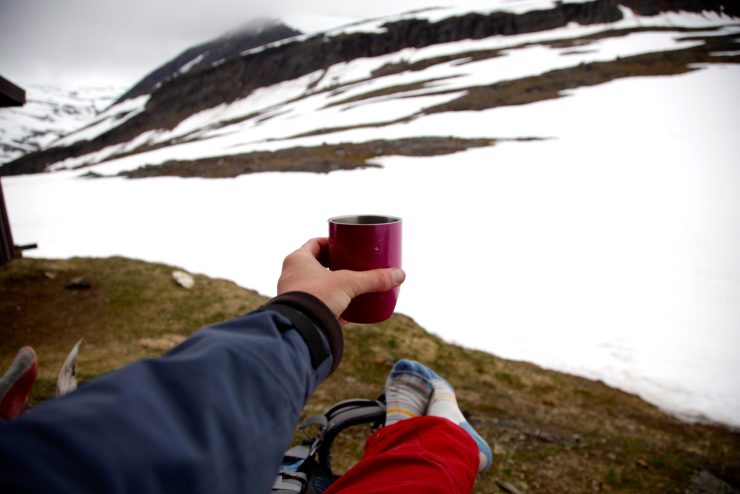
What was the best cup of coffee that you ever drank?
If you had to sift through all the hundreds, thousands, maybe even hundreds of thousands of cups of coffee that you have ever tasted, would you be able to select one?
I recently had mine.
It wasn’t in a coffee capital. It wasn’t made by a world champion barista. It wasn’t even in a cafe.
It was at the top of a mountain pass.
Some people spend their summer vacations visiting cosmopolitan capitals. I like to spend mine totally disconnected. This summer, the choice was a little extreme: two weeks backpacking above the Arctic Circle.
I had always wanted to hike on Kungsleden, a historic trail that covers about 440 kilometers in northern Sweden. It traverses through some of Sweden’s, even Europe’s, oldest national parks, and some of its most spectacular scenery. This isn’t the home of New Nordic or IKEA, this is Arctic Sweden: harsh, dramatic, raw. It is home to the Sami people, who have lived here since prehistoric times. This is reindeer land, and if you’re lucky, you’ll get a few running through your campsite as you are drinking your morning coffee.
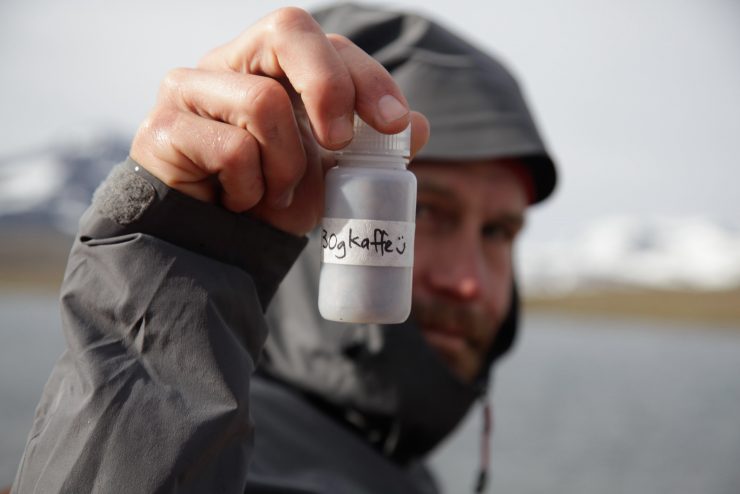
Wherever I travel, even when it’s in the backcountry, I bring coffee, and this time, coffee seemed extra fitting given the mass consumption of coffee that Sweden is known for. My boyfriend was so committed to producing the best cup that he could that, for this trip, he had measured out the precise grounds to water ratio before leaving. Beans went into a small, plastic Nalgene container that held exactly 30 grams when filled, and we knew exactly what line to fill the water to in the French press. Coffee brewing, even outdoors, is serious business.
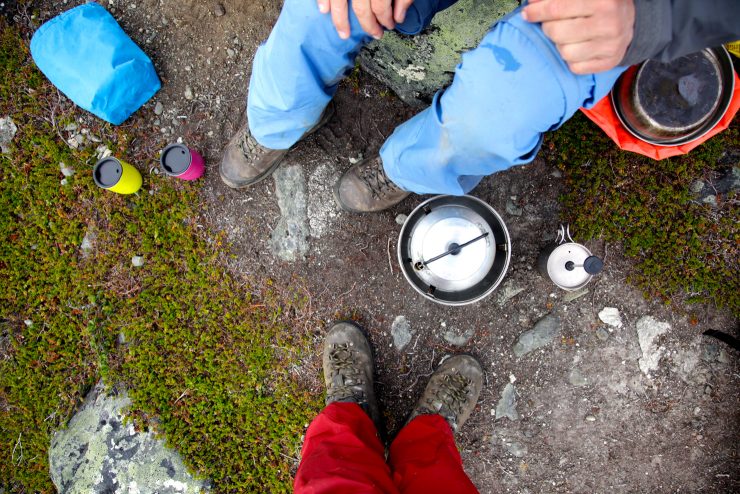
Coffee was certainly essential on this trip. This year, conditions on the Kungsleden were about a month behind schedule. That means that snow had melted much slower than usual, and many sections were covered in snow. Rivers that were usually passable by a few steps on rocks now required knee-high wading. If you can’t brew a nice cup of coffee after wading through a river, you just might not mentally make it through.
But back to the best cup that I ever drank.
It was day four of the 12-day backpacking trip. The night’s campsite had been the most exquisite: atop a ridge overlooking an entire valley. In the morning, I saw an Arctic fox cruising through, maybe on his way to scout out his first meal of the day. The first few hours would be all uphill, we would be hiking up to the highest point on Kungsleden, Tjäktapasset. Our guidebook said that the north side of the pass almost always had a little bit of snow, but this guidebook hadn’t been written for this specific year. There wasn’t just “some” snow; the entire approach to the pass was covered in snow. But here’s the thing about snow: in the heart of winter, when the air is constantly cold, walking on a snowpack can be quite easy. A snowpack in summer that has started to melt a little? A much more difficult endeavor, one that involves breaking through the snow every few meters or so. If luck isn’t with you, you might break through and hit your knee or shin on a rock. Or you might break through and find your leg right in the middle of a stream flowing beneath the snow. All of the above took place, and by the time we reached the pass, we were soaked all the way to the socks, despite waterproof mountaineering boots.
“We have to have a fika break,” said Luc.
Fika, the Swedish coffee break, is the solution to everything, after all. It was windy and cold. A light drizzle hung in the air, but on the backside of the small hut at the top of the pass, we could sit comfortably out of the wind. We pulled off our boots and socks, giving our feet a chance to dry, even in the cold air. Out came the Trangia stove and the coffee beans. I ground and Luc boiled water.
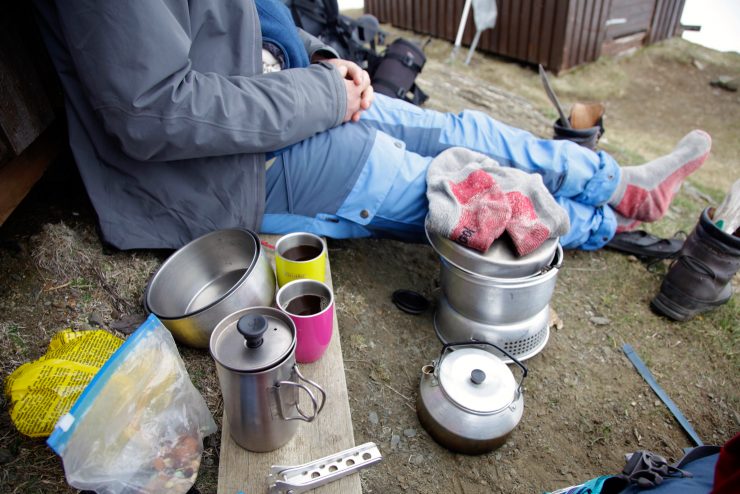
As a regular coffee drinker, there is comfort in the routine of brewing coffee. That’s why I love brewing coffee outdoors, it replicates that daily routine, but in completely different circumstances. There’s always a different view, a different spot to place the stove, a different spot to sit and drink your coffee in. And when you’re cold and moderately miserable from spending a morning postholing in the snow, the promise of a cup of coffee is even better than on the worst of mornings in the comfort of your normal kitchen.
The water boiled and we poured it in, set the timer to let it steep. While we waited, Luc set up the frying pan on top of the Trangia stove and set to trying to dry out his socks on top of it. Talk about coffee break ambiance.
The timer went off, we poured the coffee into our mugs. I pulled out the remaining peanut M&Ms that I brought along for special occasions on the trip, “special occasions” being anything difficult that we did that deserved a reward.
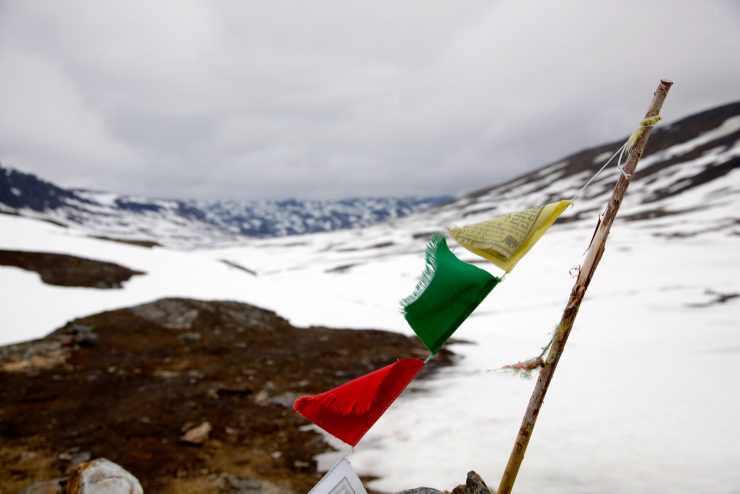
I took a drink and looked down over the pass. With low visibility, I couldn’t see that far down the trail, but I could make out the shapes of people slugging their way to the top. A string of Tibetan prayer flags waved in the wind, welcoming hikers to the top.
I took another drink.
“This is the best cup of coffee I have ever had,” I said.
“Really?” said Luc.
Yes, it’s a bold statement. In fact, it’s a bit of a ridiculous statement; it would be impossible for me to precisely rank all of the cups of coffee that I have ever consumed. But in that place and time, that cup that was in my hand was the best cup that I had ever consumed.
Often, we get hung up on taste and quality, but the overall atmosphere and moment that we drink our coffee in is as essential as the cup itself. In fact, it’s easy to get so hung up on taste that we can forget about the overall experience. Experience is as much a crucial component of how we taste drink or food as the product itself. Eat a bad meal in the company of friends and it might be better than the multiple-star meal you ate that night of your breakup because you were trying to treat yourself well.
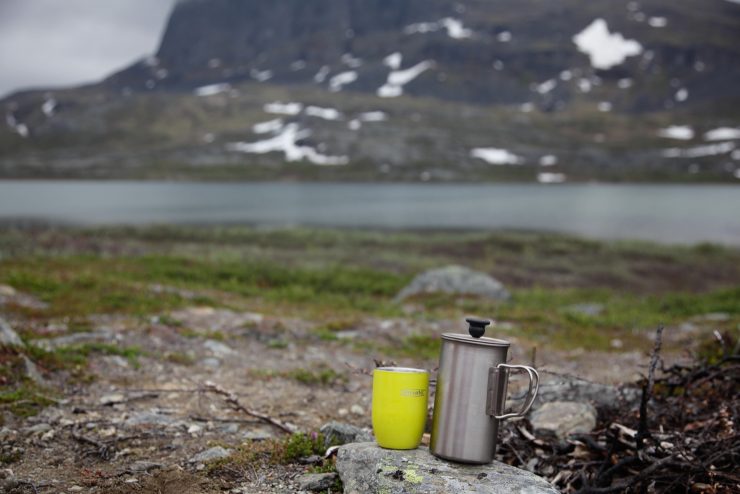
Drinking coffee outside isn’t just about the beans that you bring with you—although, trust me, bringing good beans is important—it’s about the moment, your surroundings. It’s about the entire experience, and that can’t be reduced to just the cup or the quality of the beans. Coffee outside is a beautiful thing, partly because of what you’re drinking, partly because of the process that it takes to make it, and partly because of where you are. And one thing is for sure: once you’ve had coffee outside, it’s hard to go back. Because you just might brew your best cup ever.
Anna Brones (@annabrones) is a Sprudge.com staff writer based in Paris, the founder of Foodie Underground, and the co-author of Fika: The Art Of The Swedish Coffee Break, available now from Ten Speed Press. Read more Anna Brones on Sprudge.
The post Camping With Coffee Above The Arctic Circle appeared first on Sprudge.

